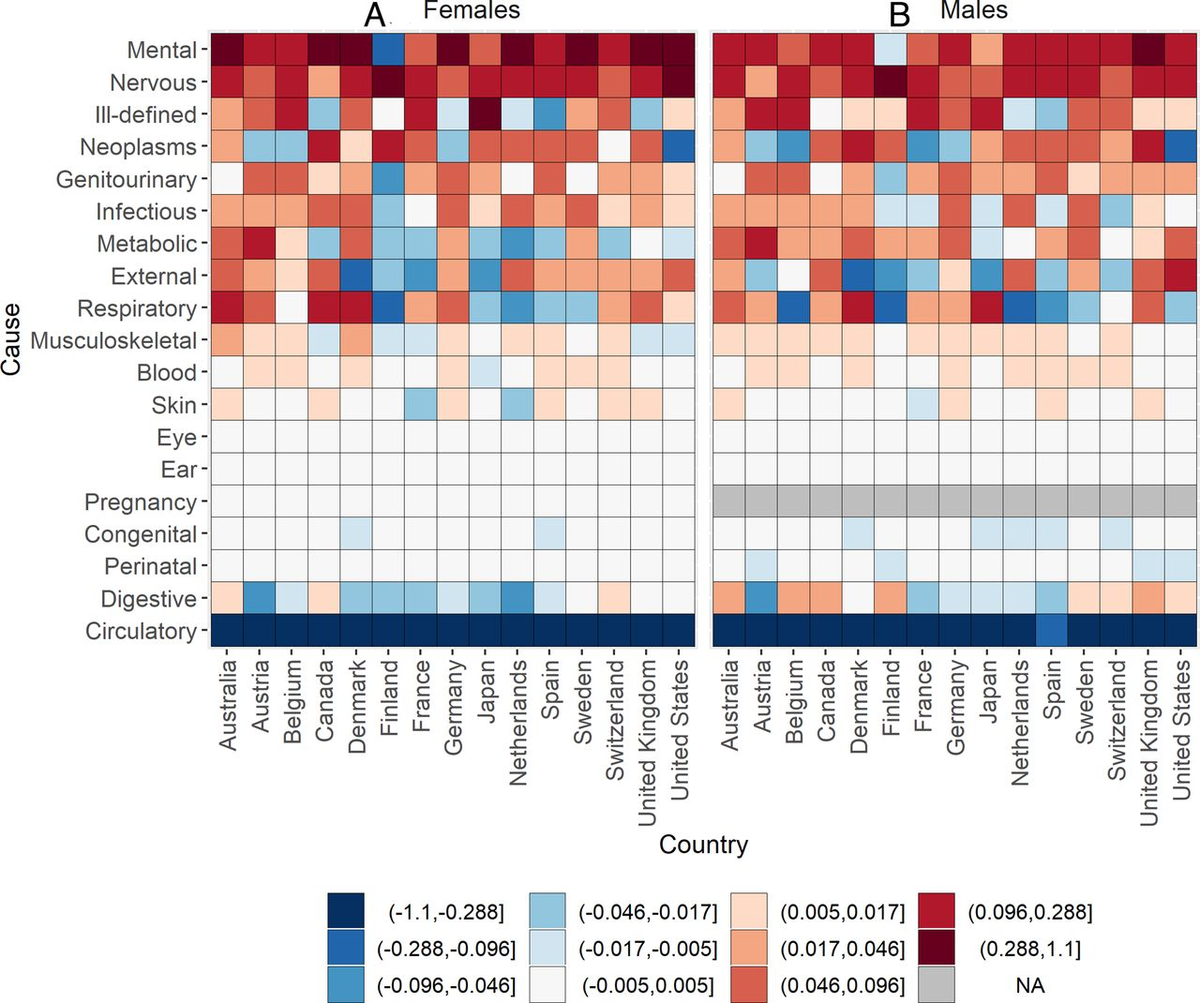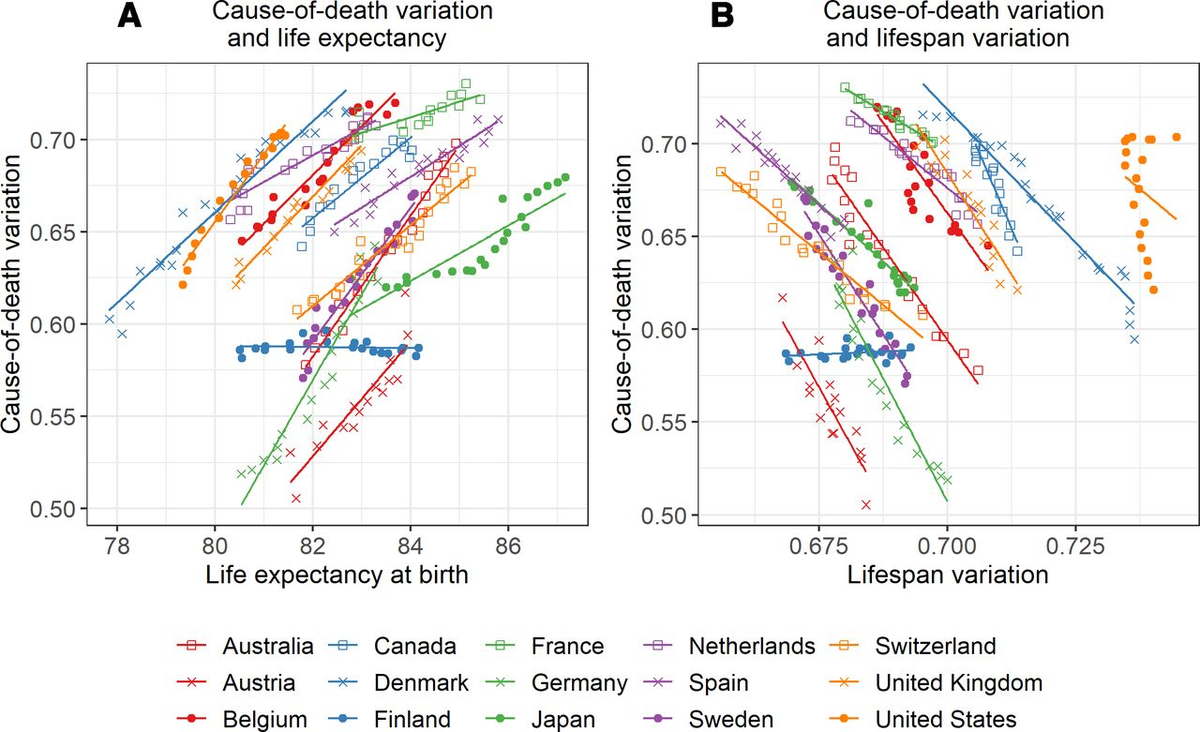This is a really interesting paper out yesterday from Marie-Pier Bergeron-Boucher, @jm_aburto and @AlysonVanRaalte in @GlobalHealthBMJ
It looks at how what we die of is changing as we live to older ages. https://gh.bmj.com/content/5/7/e002414
It looks at how what we die of is changing as we live to older ages. https://gh.bmj.com/content/5/7/e002414
On average, fewer people are dying (in blue) from circulatory diseases and more people are dying (in red) of mental and behavioural, neurological and other causes, although there is some variation between countries.
This figure is complex, but worth studying. It shows that deaths from circulatory causes at younger ages are being displaced by deaths from other conditions at older ages, while cancer deaths have fallen in younger ages, but increase at ages 80+
The key message of all of this is that as life expectancy rises, so does diversity in causes of death.
Why does that matter? Well, if you want to keep increasing life expectancy it means you have to fight many small battles, not one big one.
Why does that matter? Well, if you want to keep increasing life expectancy it means you have to fight many small battles, not one big one.
Over the last 20 or so years we've been able to increase life expectancy just by tackling cardiovascular conditions. Now we have to address cancer in old ages, mental and behavioural causes, diseases of the nervous system, genitourinary conditions, infectious diseases etc.
So it seems that even before COVID-19 came along and battered life expectancy in many countries, it was going to be increasingly difficult to sustain the growth we had seen over the previous decades.
/ENDS
/ENDS

 Read on Twitter
Read on Twitter




